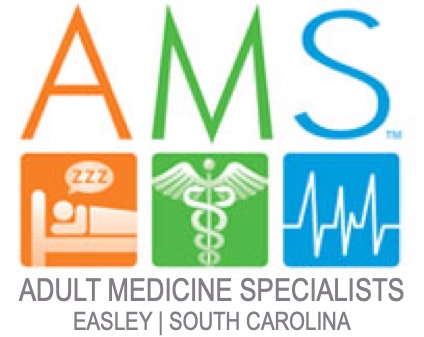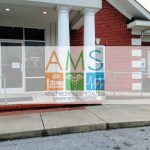Understanding Postural Orthostatic Tachycardia Syndrome (POTS): A Place of Refuge for Patients with Dysautonomia
At our internal medicine practice in rural South Carolina, we take great pride in providing care for patients with complex and often misunderstood conditions. One diagnosis that holds particular importance to us is Postural Orthostatic Tachycardia Syndrome (POTS), a condition that falls under the umbrella of dysautonomias. For many patients, the journey to a proper diagnosis and effective treatment plan is long and frustrating. Our mission is to change that narrative by offering a refuge where patients with POTS can find understanding, compassionate care, and a path to improved health.
What is POTS?
POTS is a chronic condition characterized by an exaggerated increase in heart rate upon standing. It is part of a larger group of disorders called dysautonomias, which involve dysfunction of the autonomic nervous system. Key symptoms include:
- Orthostatic intolerance: Dizziness, lightheadedness, and fainting when standing.
- Fatigue: Persistent and debilitating exhaustion.
- Brain fog: Difficulty concentrating and memory problems.
- Gastrointestinal issues: Nausea, bloating, and abdominal pain.
- Other symptoms: Palpitations, chest pain, and sweating abnormalities.
Despite its profound impact on quality of life, POTS is often misunderstood or dismissed, leaving patients feeling isolated and unheard.
The Broader Context of Dysautonomia
POTS is one of several dysautonomias, which also include:
- Neurocardiogenic syncope
- Multiple system atrophy
- Pure autonomic failure
- Baroreflex failure
Understanding POTS is critical because it often overlaps with or mimics other conditions in this category. Patients frequently endure years of seeing multiple specialists—cardiologists, neurologists, gastroenterologists—without receiving a cohesive diagnosis or effective treatment plan. The lack of awareness among healthcare providers exacerbates this problem, leaving patients feeling ignored and underserved.
Challenges in Diagnosis and Misunderstandings
For many physicians, the symptoms of POTS may appear nonspecific or may be attributed to anxiety, deconditioning, or psychosomatic causes. This misunderstanding often delays diagnosis and appropriate treatment. Key challenges include:
- Lack of Awareness: Many physicians are unfamiliar with the diagnostic criteria for POTS, such as the heart rate increase of ≥30 bpm (or ≥40 bpm in adolescents) within 10 minutes of standing.
- Dismissal of Symptoms: Patients may be told their symptoms are “all in their head,” leading to frustration and mistrust of the medical system.
- Fragmented Care: Specialists often focus narrowly on individual symptoms, missing the broader picture of dysautonomia.
Our Commitment to POTS Patients
At our practice, we aim to be a beacon of hope for patients with POTS. We take pride in offering:
- A Place to Be Heard: We listen carefully to patients’ symptoms and validate their experiences, ensuring they feel understood and supported.
- Comprehensive Diagnostic Work-Up:
- Tilt Table Testing: We perform detailed autonomic testing, including tilt table tests, to confirm the diagnosis.
- Evaluation of Overlapping Conditions: Dysautonomia often coexists with conditions like chronic fatigue syndrome (ME/CFS), fibromyalgia, and mast cell activation syndrome, which we assess as part of our evaluation.
- A Multidisciplinary Approach:
-
- We integrate findings across multiple systems to create a unified treatment plan tailored to the patient’s unique needs.
A Comprehensive Treatment Plan
Our treatment plans are evidence-based, holistic, and tailored to the individual. Key components include: 1. Non-Pharmacologic Therapies
- Hydration and Salt Intake:
Raj SR. “Postural tachycardia syndrome (POTS).” Circulation. 2013;127(23):2336–2342.- Discusses the role of fluid and salt intake in managing POTS symptoms.
- Compression Garments:
Stewart JM. “Orthostatic intolerance in pediatrics.” J Pediatr. 2002;140(4):404–411.- Highlights the benefits of compression garments for reducing orthostatic intolerance.
- Exercise Programs:
Fu Q, Levine BD. “Exercise and non-pharmacological treatment of POTS.” Auton Neurosci. 2018;215:20–27.- Details the efficacy of structured exercise regimens like the Levine protocol.
2. Pharmacologic Therapies
- Beta Blockers:
Raj V, et al. “Beta-blockers in postural tachycardia syndrome: A single-center experience.” J Am Coll Cardiol. 2009;54(8):593–600.- Discusses the use of beta-blockers to control heart rate in POTS.
- Fludrocortisone:
Jacob G, et al. “Fludrocortisone treatment improves the postural tachycardia syndrome.” Ann Neurol. 1997;42(6):853–858.- Demonstrates the benefit of fludrocortisone in expanding plasma volume.
- Midodrine:
Low PA, et al. “Midodrine improves orthostatic hypotension in patients with autonomic failure.” JAMA. 1997;277(13):1046–1051.- While focused on orthostatic hypotension, this study supports midodrine use for vascular tone improvement.
3. Intravenous Therapies
- IV Fluids:
Kanjwal K, et al. “Intravenous saline for the management of postural tachycardia syndrome: A novel use of an old therapy.” J Innov Card Rhythm Manag. 2011;2(3):123–127.- Highlights the role of IV saline in alleviating POTS symptoms.
- IV Antioxidants:
Khurana RK, Setty A. “Postural tachycardia syndrome and oxidative stress.” Auton Neurosci. 2012;169(1):102–104.- Discusses the role of oxidative stress in POTS and the potential benefit of antioxidant therapy.
4. Lifestyle and Adjunctive Therapies
- Dietary Modifications:
Wells R, et al. “The effect of dietary modifications in patients with postural tachycardia syndrome.” Front Physiol. 2018;9:90.- Explores the benefits of dietary interventions in managing POTS symptoms.
- Stress Management:
Thayer JF, Lane RD. “The role of vagal function in the risk for cardiovascular disease and mortality.” Biol Psychol. 2007;74(2):224–242.- Explains the importance of autonomic balance and stress reduction in chronic conditions like POTS.
- Transcutaneous Vagus Nerve Stimulation:
Breit S, et al. “Vagus nerve as modulator of the brain–gut axis in psychiatric and inflammatory disorders.” Front Psychiatry. 2018;9:44.- Describes the benefits of vagus nerve stimulation in reducing systemic inflammation and autonomic dysregulation.
General POTS Management and Guidelines
- Freeman R, et al. “Consensus statement on the definition of postural tachycardia syndrome, inappropriate sinus tachycardia, and vasovagal syncope.” Auton Neurosci. 2011;161(1–2):46–48.
- Provides guidelines for diagnosis and management of POTS.
- Raj SR, et al. “Postural tachycardia syndrome (POTS): Clinical features, diagnosis, and management.” Heart Rhythm. 2019;16(2):e13–e22.
- A comprehensive review of the pathophysiology, diagnosis, and treatment of POTS.
Why Patients with POTS Seek Us Out
We understand the frustration and isolation many patients experience before receiving a POTS diagnosis. Our practice provides:
- A Safe Space: Patients know they will be listened to and respected.
- Coordinated Care: We take a comprehensive approach, minimizing the need for fragmented specialist visits.
- Self-Referrals Welcome: Patients do not need to wait for a referral to begin their journey to better health.
A Call to Physicians: Partner with Us
We welcome referrals from other physicians who may suspect POTS in their patients or are struggling to manage its complexities. By working together, we can ensure these patients receive the care and understanding they deserve.
Conclusion
POTS is more than a diagnosis—it is a life-altering condition that demands comprehensive and compassionate care. At our practice, we provide a refuge for patients with dysautonomia, offering the tools and support they need to reclaim their quality of life. Whether you are a patient seeking answers or a physician looking for a trusted partner in care, we are here to help.
Steven E. Freeman, MD, PhD




